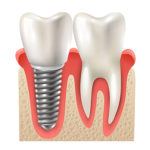 Most dental cleanings take only between 25 and 30 minutes. Cleanings should be performed every six months to prevent excessive plaque buildup. Plaque left untreated can lead to unhealthy gums and tooth decay. A routine dental cleaning should include scaling, root planing and polishing.
Most dental cleanings take only between 25 and 30 minutes. Cleanings should be performed every six months to prevent excessive plaque buildup. Plaque left untreated can lead to unhealthy gums and tooth decay. A routine dental cleaning should include scaling, root planing and polishing.
Scaling: This is the process of removing plaque and tartar from all tooth surfaces in a variety of methods, depending on the amount of plaque and tartar.
Dental hygienists traditionally perform scaling by hand. However, new and advanced technology has lead to more modern methods such as electric scalers. This sophisticated tool allows dental cleanings to be performed more efficiently and in less time. To achieve best results, both electric and manual scaling methods are combined for dental cleanings.
Root Planing: This is the process of cleaning pockets in the gums to treat and prevent gum problems.
Root planing is used to treat moderate to advanced gum diseases. When the gum is inflamed, gum pockets become deeper and they may lose connections to the bone inside. The deeper the pockets, the easier it is for plaque deposits to become trapped and worsen gum problems.
Root planing involves inserting a pointed dental tool called scalers into the gym pockets to clean plaque buildup. Depending on the degree of difficulty, root planing may take several appointments and a local anesthesia may be used to prevent pain.
Polishing: This is the last step in tooth cleaning and involves finishing the surface of the teeth to make them shiny and clean.


